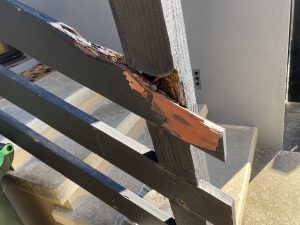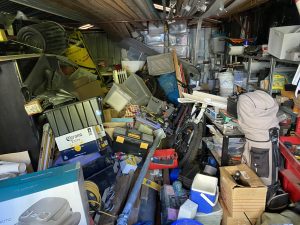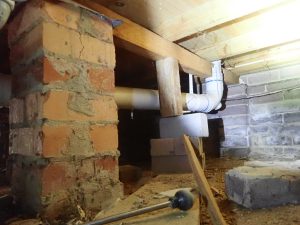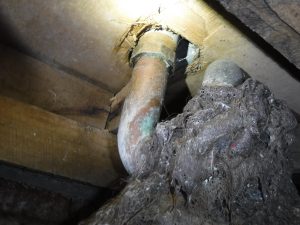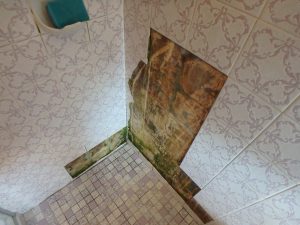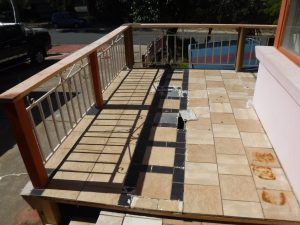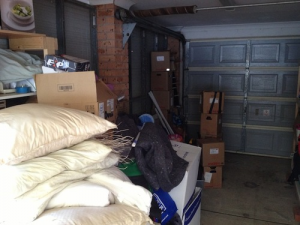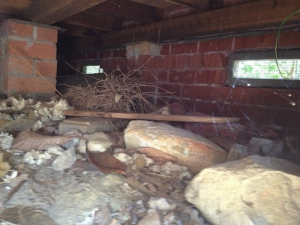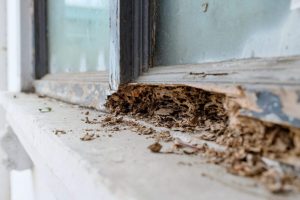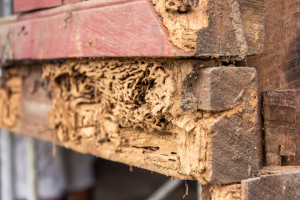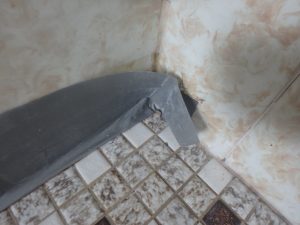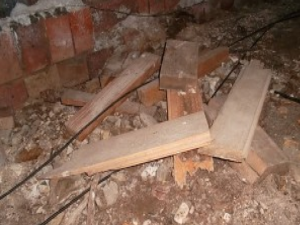
PrEPARE YOUR PROPERTY FOR OUR VISIT!

Preparing your property for a presale building inspection isn’t just about presentation—it’s about making sure the final report reflects the home at its absolute best. Inspectors have a legal obligation to report on the condition of the property as it presents on the day of inspection. Unless you are opting for a pre-assessment, there are no preliminary versions or revisions, the report is issued based on what is observed on the day. That means any issues visible at the time will be documented and disclosed, regardless of whether they’re fixed later. It’s far better to ensure the home is inspection-ready from the outset, avoiding preventable adverse comments and the need to issue multiple versions of the report. If you’ve had an expert opinion, we’re happy to include it with your presale report—additional documentation can strengthen buyer confidence. Similarly, if you have regular servicing on assets such as heating or cooling systems or regular pest control and termite inspections, having a folder for your agent to refer to when dealing with clients will demonstrate that the property has been well maintained.
This guide will help you prepare the property before our inspector arrives. Click the links below for detailed hints and tips on how to present the home in its best light. If you’re planning any repairs or maintenance, make sure the work is completed to a proper trade standard—quick fixes or DIY jobs that don’t meet the mark will still be flagged in the report.
It’s also worth noting that building reports are meant to reflect the natural ageing of a property. General wear and tear is completely normal, especially in older homes. In fact, buyers often expect to see it. A report that appears too perfect can sometimes raise more questions than it answers.
OUTSIDE
Overflowing or blocked gutters are one of the most common issues noted in presale building reports. Not only do they signal poor maintenance, but they can also lead to water damage, mould, and structural issues—especially around eaves and downpipes. Inspectors are required to report visible blockages or signs of overflow, even if it’s just leaves. If you are clearing gutters yourself make sure you take appropriate safety precautions when working at heights.

- Clear leaves, twigs, and debris from all gutters and downpipes
- Flush gutters with a hose to check water is draining freely
- Trim back any overhanging branches that could cause future build-up
- If gutters are rusted, sagging or disconnected—get them fixed before inspection
Loose, cracked, or missing roof tiles—and rusted or lifting metal sheets—will always be reported. Inspectors must note visible damage, even if it doesn’t cause current leaks. If you are undertaking any roof maintenance yourself make sure you take appropriate safety precautions when working at heights.

- Walk around the property and look for obvious signs of wear from the ground.
- Replace cracked tiles and secure any loose sheets.
- If in doubt, have a roofer do a quick review before your presale inspection. If you obtain a specialist report, we’re happy to include it as an addendum to provide added reassurance for prospective buyers.
Overgrown vegetation, stored items, and garden beds built up against the home’s exterior can all trigger comments in a building report. Inspectors are required to note anything that obstructs access, traps moisture, or increases the risk of pests.
✅ What to do:
- Trim back plants, vines, and shrubs that are touching or leaning on walls
- Trim bushes, vines, and branches that touch walls, eaves, or the roof
- Remove mulch, soil, or landscaping that covers weep holes or sits high against cladding
- Move bins, firewood, garden furniture, and any stored goods away from walls and vents
- Cut back plants from fences and clear garden beds that are too close to the house.
Pooling water or poor drainage is a red flag. Inspectors must report signs of water damage or inadequate drainage.
✅ What to do:
- Check that water flows away from the home and doesn’t collect at the base of walls.
- Clear garden drains, downpipes, and stormwater pits.
- Add gravel or redirect runoff if needed to improve flow
- Hot water, air conditioning and water tank units that release water alongside or near to building walls need to be connected to a drain. This will be observed during your inspection. If this is not possible then their water outlet needs to be piped several meters away from the
building, as the resulting wet area is highly conducive to termites
Cracks, peeling paint, rust, and signs of water damage are all noted in reports. Even cosmetic touch-ups help reduce the appearance of neglect.
✅ What to do:
- Patch or repaint areas where materials are deteriorating.
- Replace broken bricks or cracked render where possible.
If your home is elevated, the inspector will need to get under it. If access is blocked or sealed off, this may result in a limited report which concerns buyers.
✅ What to do:
- Unlock any hatches or doors to the subfloor area
- Remove stored items or obstacles blocking access
- All subfloor stored goods and debris is noted in reports, it’s an easy win to have the area clear so there is nothing for us to comment on
- Make sure vents aren’t obstructed by plants, soil, or debris
- Observe if the subfloor is wet, if so you might need some plumbing or ventilation advice
Loose balustrades, rusted fixings, and weathered timbers are common notes in reports
✅ What to do:
- Tighten screws or bolts and check for movement or rot
- Treat any rust or decay on handrails or posts
- Replace broken or cracked decking boards
Timber stored next to the house, garden sleepers in contact with walls, or untreated timber fences can all be flagged as conducive to termite activity.
✅ What to do:
- Remove loose timber or firewood stored near the home.
- Ensure timber garden edging or structures aren’t touching the building.
- If there are any doubts in your mind regarding the presence of timber pests, consider a pest inspection beforehand. Termite damage is commonly reported in presale reports for older buildings, but live species detected on site might delay your sale
INSIDE
Water leakage or stains on ceilings, walls, or under sinks are noted in every report—even if they’re old and inactive. Inspectors don’t guess—if moisture is visible, they’ll report it.

- Fix any active leaks (taps, toilets, plumbing) before inspection
- Walk around your property and look at walls and ceilings carefully. Clean or repaint areas with historic stains (if moisture has been resolved)
- Dry out damp areas using ventilation or dehumidifiers
Cracked, missing or mouldy sealant in wet areas will be flagged as maintenance issues.

- Re-silicone around showers, baths, vanities, and splashbacks
- Replace deteriorated or stained grout
- Ensure ventilation (windows or exhaust fans) are working properly
Loose door handles, sticking windows, wobbly towel rails or squeaky hinges are all little things that show up on reports. A home that “works” properly feels better maintained overall.
✅ What to do:
- Tighten handles, hinges, latches, and rails
- Lubricate squeaky or stiff mechanisms
- Replace anything obviously broken
Small cosmetic fixes can make a big difference to how the property presents and reduce comments about superficial defects.
✅ What to do:
- Fill obvious cracks or dents in walls
- Repaint scuffed or damaged areas
- Touch up chipped paint on skirtings or door frames
Inspectors need to access roof spaces, subfloors, manholes. Excess stored goods that prevent a reasonable inspection will be noted in reports and raise unnecessary red flags for buyers.
✅ What to do:
- Do your spring clean BEFORE we arrive
- If there are stored goods piled high and we can’t see an area, we have to report that we had incomplete access to the property – it’s perfectly fine to be living as normal, but if you’re planning on clearing out or decluttering… please do it before we arrive!
- Clear areas and move furniture or stored items to ensure clear access to ceiling and subfloor hatches
- Unlock doors to garages, sheds, roof cavities or service areas
If you are halfway through painting then that is what the report will say. We are legally obliged to report wat we see on the day. We can definitely state that the building was ‘mid renovation’, however, if you do not want these comments in the report, please finish all your repairs and renos before we arrive.
Buyer
For more comprehensive details about the packages below please head to our Process page which gives you a complete overview of the types of reports and services you will be delivered with your chosen package.
ACT SELLER’S REPORT
$0 – No Pay Rapid
ACT legislation requires a Vendor to provide their Buyer with a suite of Building, Compliance, Timber Pest and EER (Energy Efficiency) Reports prior to sale. This package defers your costs ($1550 + gst) until settlement when your solicitor will claim the full cost of these reports from the Buyer. To find out more about our No Pay Package click here.
- Building, Compliance, Timber Pest & EER Report
- Access Canberra standard building file turnaround (4 days)
- Next day release of report
- Prefer to pay upfront? Our standard No Pay option does not incur any additional fees. If, however, you do not wish to defer your payment we can make arrangements to invoice upfront.
- Need it faster? Access Canberra can turn your building file around the next day, call us to confirm Fasttrack costs and appointment availability.
$0 – Energy Rating only (Class A Building) OR
$0 – No Pay Rapid (Class B Building)
If you are unsure about your Building class please ask your solicitor or give us a call on 6288 0402.
Energy Rating
If you are Selling a Class A Townhouse, you will only require an Energy Efficiency Rating prior to marketing. This package defers your costs ($395 + gst) until settlement. To find out more about our No Pay Package click here.
No Pay Rapid (Full Suite of Reports)
When selling a Class B Townhouse in the ACT you are required to obtain a Building, Compliance, Timber Pest and EER report prior to marketing. This package defers your costs ($1550 + gst) until settlement when your solicitor will claim the full cost of these reports from the Buyer. To find out more about our No Pay Package click here.
- Building, Compliance Timber Pest & EER Report
- Access Canberra standard building file turnaround (4 days)
- Next day release of report
- Prefer to pay upfront? Our standard No Pay option does not incur any additional fees. If, however, you do not wish to defer your payment we can make arrangements to invoice upfront.
- Need it faster? Access Canberra can turn your building file around the next day, call us to confirm Fastrack costs and appointment availability.
$0 – No Pay Energy Rating
If you are selling a unit, you will require an Energy Efficiency Rating prior to marketing. This package defers your costs ($395 + gst) until settlement. To find out more about our No Pay Package click here.
- EER Report
- Next day release of report
- Prefer to pay upfront? Our standard No Pay option does not incur any additional fees. If, however, you do not wish to defer your payment we can make arrangements to invoice upfront.
NSW SELLER’S REPORT
$0 – No Pay NSW Rapid
Modelled on the ACT reporting system, we are witnessing significant advantages when a Seller in NSW supplies intending purchasers with a comprehensive report that they can depend on including streamlined administration for all stakeholders, negotiations and sales procedures are fast-tracked and stakeholders will all refer to and rely upon one report.
This package defers your costs ($800 + gst) until settlement. To find out more about our No Pay Package click here.
- Building Maintenance and Timber Pest Report
- Next day release of report
- Regional NSW travel surcharge may apply
ACT & NSW BUYER’S REPORT
$0 – No Pay NSW Rapid
Modelled on the ACT reporting system, we are witnessing significant advantages when a Seller in NSW supplies intending purchasers with a comprehensive report that they can depend on including streamlined administration for all stakeholders, negotiations and sales procedures are fast-tracked and stakeholders will all refer to and rely upon one report.
This package defers your costs ($800 + gst) until settlement. To find out more about our No Pay Package click here.
- Building Maintenance and Timber Pest Report
- Next day release of report
- Regional NSW travel surcharge may apply
Building & Maintenance Report
These packages are designed for clients who wish to commission an independent opinion. Independent inspections are regularly being booked with our company as our local community recognizes the importance of having a ‘Residential Reports’ Inspector evaluate their prospective home. Our expert builders review the property with an eagle eye and report their findings back to you in a simple and comprehensive document.
- Building & Maintenance Report
- Next day release of report
- $550 + gst
- Regional NSW travel surcharge may apply
Timber Pest Report
These packages are designed for clients who wish to commission an independent opinion. Independent inspections are regularly being booked with our company as our local community recognises the importance of having a ‘Residential Reports’ Inspector evaluate their prospective home. Our expert builders review the property with an eagle eye and report their findings back to you in a simple and comprehensive document.
- Timber Pest Report
- Next day release of report
- $330 + gst
- Regional NSW travel surcharge may apply
AGENT
Real Estate Agents. Click here!
SELLER
If You Are Selling Click Here!
BUYER
Buying A Property? Click Here!



